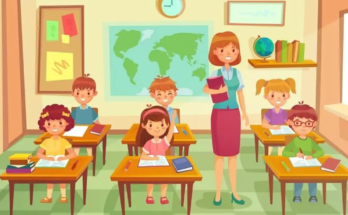Introduction:
Language arts instruction is a cornerstone of education, fostering literacy skills, critical thinking, and communication abilities in students. In this guide, we’ll explore the components of effective language arts instruction and discuss strategies for promoting reading, writing, speaking, and listening skills in students of all ages.
Foundations of Language Arts Instruction:
Language arts instruction encompasses a range of skills and competencies, including reading, writing, speaking, and listening. These foundational skills form the basis for effective communication, critical thinking, and academic success. By providing students with opportunities to engage in meaningful literacy experiences, educators can empower them to become confident and proficient communicators in all areas of life.
Reading Instruction:
Reading instruction focuses on developing students’ ability to decode, comprehend, and analyze text effectively. Through systematic phonics instruction, students learn letter-sound relationships, sight words, and decoding strategies to become fluent readers. Comprehension instruction teaches students to understand and interpret text, make predictions, ask questions, and evaluate information critically. Additionally, reading instruction promotes a love for literature, encouraging students to explore different genres, authors, and perspectives through independent reading and shared reading experiences.

Writing Instruction:
Writing instruction develops students’ ability to communicate ideas, organize thoughts, and express themselves effectively in written form. Through process-based writing approaches, students learn to plan, draft, revise, edit, and publish their writing. Writing instruction emphasizes both creative expression and academic writing skills, teaching students to write narratives, informational texts, persuasive essays, and research papers. Additionally, writing instruction promotes the development of grammar, spelling, punctuation, and vocabulary skills necessary for clear and effective communication.
Speaking and Listening Instruction:
Speaking and listening instruction focuses on developing students’ oral communication skills, including speaking fluently, listening actively, and participating in meaningful conversations. Through speaking activities, such as presentations, debates, and discussions, students learn to articulate their ideas, communicate clearly, and engage with diverse audiences. Listening activities teach students to listen actively, interpret information, ask clarifying questions, and respond thoughtfully to others’ ideas and perspectives. Additionally, speaking and listening instruction promotes collaboration, empathy, and respectful communication in both academic and social contexts.
Integration Across the Curriculum:
Language arts instruction can be integrated across the curriculum to enhance learning experiences in all subject areas. By incorporating literacy skills into science, social studies, mathematics, and other content areas, educators can reinforce and extend students’ learning while promoting interdisciplinary connections. For example, students may write research reports in social studies, analyze informational texts in science, or create multimedia presentations in mathematics. Integration across the curriculum fosters a holistic approach to literacy development and prepares students to apply their skills and knowledge in real-world contexts.
Differentiated Instruction and Assessment:
Effective language arts instruction incorporates differentiated instruction and assessment to meet the diverse needs and interests of all students. Teachers use a variety of instructional strategies, materials, and activities to accommodate students’ learning styles, preferences, and readiness levels. Additionally, teachers use ongoing assessment data, such as observations, checklists, rubrics, and informal assessments, to monitor students’ progress, identify areas of need, and adjust instruction accordingly. By providing differentiated instruction and assessment, educators can support each student’s growth and development as a reader, writer, speaker, and listener.
Conclusion:
In conclusion, effective language arts instruction is essential for fostering literacy skills, critical thinking, and communication abilities in students. By providing comprehensive reading, writing, speaking, and listening instruction, integrating literacy skills across the curriculum, and differentiating instruction and assessment to meet students’ diverse needs, educators can empower students to become confident and proficient communicators in all areas of life. Together, we can empower learners, cultivate a culture of literacy, and prepare students for success in school and beyond. Thank you for joining us on this exploration of language arts instruction.



